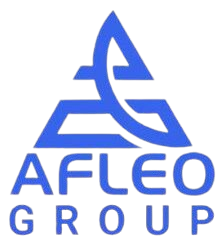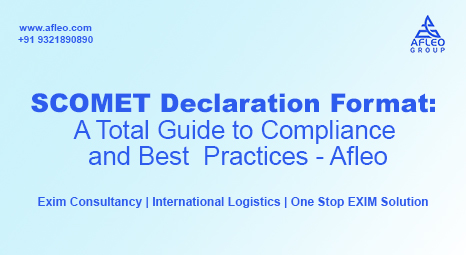India, as a responsible player in the global trade community, has built a strong export control regime to protect sensitive goods, technologies, and materials from being misused or diverted to unwanted ends. Underpinning this regulatory environment is SCOMET-a central compliance instrument that all exporters handling dual-use or strategic items need to grasp and comply with.
Exporting based on the improper procedure not only leads to the refusal of shipments but might even attract drastic legal sanctions, such as penalties and blacklisting. SCOMET Declaration is one of the most essential documents in the export process.
In this blog, we’re going to delve deeper into what SCOMET is, when the declaration needs to be done, how to complete it correctly, and more importantly, how to make sure you remain compliant by performing solid due diligence. By reading this guide, you’ll have the knowledge and tools that you can use to confidently navigate the process of declaration.
What is SCOMET?
SCOMET is an acronym for Special Chemicals, Organisms, Materials, Equipment and Technologies. It is a control list of controlled items which the Directorate General of Foreign Trade (DGFT) under India’s Foreign Trade Policy keeps.
[To know more about SCOMET, you may refer to SCOMET items Exports License]
Key Highlights:
● SCOMET contains goods that possess dual-use potential-that is, have civilian as well as military application.● It is not just limited to weapons or defense hardware; even chemicals, biological substances, aerospace products, electronics, sensors, and nuclear energy-related technologies are included.
SCOMET Categories:
The items fall under nine categories (0 to 8):
| SCOMET CATEGORY | SCOMET ITEMS | LICENSING JURISDICTION |
|---|---|---|
| 0 | Nuclear Materials, nuclear-related other materials, equipment and technology | Department of Atomic Energy(DAE) |
| 1 | Toxic chemical agents and other chemicals | DGFT |
| 2 | Micro-organisms,Toxins | DGFT |
| 3 | Materials, Materials Processing Equipment and related Technologies | DGFT |
| 4 | Nuclear-related other equipment and technology, not controlled under Category ‘0’ | DGFT |
| 5 | Aerospace systems, equipment, including production and test equipment, and related technology | DGFT |
| 6 | Munitions List | Department of Defence Production (DDP), Ministry of Defence (DGFT for Category 6A007 and 6A008) |
| 7 | Reserved | DGFT |
| 8 | Special Materials And Related Equipment, Material Processing, Electronics, Computers, Telecommunications, Information Security, Sensors And Lasers, Navigation And Avionics, Marine, Aerospace And Propulsion. | DGFT |
[SCOMET Items List]
Exporting any product falling under these categories without proper permission is a criminal offense in Indian law as well as in international treaties such as the Wassenaar Arrangement and the Missile Technology Control Regime (MTCR).
[Read More About Wassenaar Arrangement]
What is a SCOMET Declaration and When is it Required?
SCOMET Declaration is an exporters’ self-declaration, with which they validate whether or not the exported commodities fall under any of the categories listed in the SCOMET list.
When is it Mandatory?
- When exporting goods that could potentially be categorized as dual-use technologies
- When asked for by a customs authority or DGFT officer
- For transactions with sensitive destinations or prohibited end-users
This statement is a prerequisite to DGFT approving the grant of a license for controlled items.
Exporter’s Responsibility:
Exporters are required to undertake self-classification, i.e., determine and certify if their product is on the SCOMET list or not. This is a statutory statement, and any misdeclaration can lead to severe compliance violations.
[Download/Preview] SCOMET Declaration Format (with Explanation)
The format usually has the following fields:
| Field | Description |
|---|---|
| Exporter’s Name and Address | Legal name and full registered address of the company |
| IEC Code | Your Importer Exporter Code issued by DGFT |
| Product Description | Detailed technical description of the item being exported |
| HS Code / ITC(HS) Code | 8-digit code used to classify goods |
| End-Use | How and where the product will be used (e.g., manufacturing, research) |
| End-User Details | Name, address, and background of the receiving entity |
| Declaration Statement | Self-certification by the exporter about SCOMET applicability |
Tip: Complete this format carefully. Mistakes or omissions can result in avoidable delays or penalties.
Step-by-Step Guide to Fill the SCOMET Declaration Format
1. Company and Exporter Information
● Use your registered company name● Ensure the IEC is valid and active
2. Product Details
● Give full technical specifications● Do not use generic words like “machine” or “device”
Example:
● Incorrect: “Metal equipment”● Correct: “Precision high-speed 5-axis CNC milling machine, Model X3000, with a tolerance of 0.005 mm”
3. Identification of HS Code
● Find the ITC (HS) code of the product● Use DGFT’s database or HS Lookup software
4. End-Use & End-User Certificate
● Describe how the product will be used(e.g., “for the production of LED circuit boards”)
● Take a formal end-user certificate (EUC) if necessary
5. Self-Declaration
● Ensure that your product does or does not fall under SCOMET● Sign with complete awareness of the legal consequences
Mistakes to Avoid:
● Utilizing out-of-date HS Codes● Incorrectly identifying product classification
● Inaccurate or incomplete EUC
● Leaving spaces blank or unclear
Due Diligence Prior to Signing the Declaration
This is perhaps the most critical step. Before signing on the dotted line:
Ask yourself:
● Have I checked if my product is categorized under any SCOMET category?● Do I know the consequences of a wrongful declaration?
How to Conduct Due Diligence:
● Check the current DGFT notification regarding SCOMET● Compare your product’s technical specification and HS Code
● Use classification tools or consult consultants
● File a Product Classification Request with DGFT in case of doubt
Risks of Omitting This Step:
● Rejection of the license● Export seizure or blacklisting
● Legal action and fines
● Loss of credibility and trust of buyers
Always refer to a trade compliance specialist if uncertain.
How to Find Out If Your Product Comes Under the SCOMET List?
Step-by-Step Method:
1. Determine your product’s 8-digit ITC(HS) code2. Go to the DGFT website
3. Download the latest SCOMET list notification
4. Search by keyword or category number
Examples of Controlled Products:
● Dual-use chemicals (phosphorus compounds, nerve agents)● Electronics with military-grade encryption
● Satellite communication devices
● Laser rangefinders and drone parts
If there’s any doubt, don’t guess-get professional classification assistance.
Best Practices for SCOMET Compliance
1. Keep Your Documentation Current
● Regularly renew your IEC and licenses● Archive previous declarations for audits
2. Train Your Staff
● Hold quarterly compliance workshops● Make sure your sales and logistics staff know SCOMET
3. Monitor Regulatory Changes
● Subscribe to DGFT circulars● Watch export control advisories
4. Have a Pre-Export Checklist
● Is correct classification of product maintained?● Is end-use certificate established?
● Has SCOMET declaration been checked?
Conclusion
Working through India’s export control regimes can appear complicated at first, but exporters can optimize the process and stay within budget with the appropriate resources, proper diligence, and professional consultation.
The SCOMET Declaration is not a form only-rather, it’s an autoloopback self-certification. Get accurate when filling it out, and if uncertain, always overcorrect.
● Access the official format● Cross-check classification very carefully
● Use an expert as and when required
FAQs
SCOMET includes sensitive and dual-use products. Exporters of high-technology items, chemicals, and strategic gear need to file this declaration when they are requesting licenses or exporting those types of products.
Yes SCOMET declaration is required for all exports.
Misdeclaration can lead to license rejection, confiscation of goods, monetary fines, or even prosecution.
DGFT refreshes the SCOMET list from time to time as per international commitments. Visit the website frequently.
You can approach DGFT-recommended trade advisors, international logistics companies with compliance teams, or private export control consultants.
Download the Official SCOMET Declaration Format
Ensure you’re using the latest DGFT-approved version for all relevant exports.[Download Now – PDF]
Need Help with Product Classification?
Unsure if your product falls under the SCOMET list? Let our experts guide you.
Have any doubts? Please fill the form below to get in touch with us.

